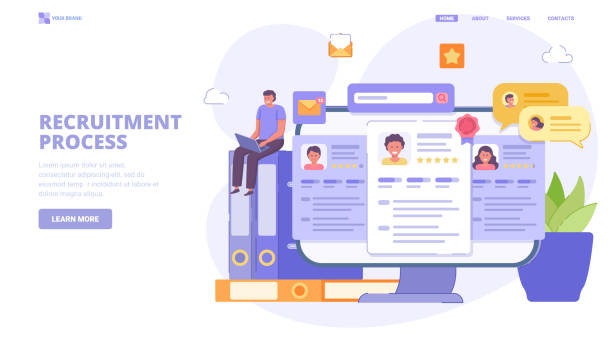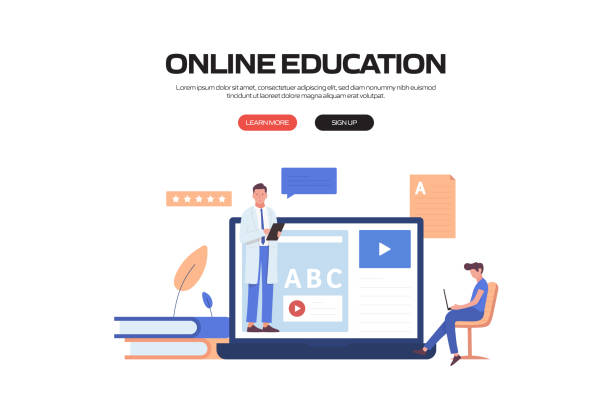An Introduction to Multilingual Website Design and Its Necessity in Today’s World

In today’s rapidly globalizing world, a digital presence in only one language is not enough.
#Multilingual_website_design is no longer a competitive advantage; it has become a necessity.
This approach allows #businesses to access the #global_market and connect with their #international_users.
In the #digital age, your website is not only your business’s shop window but also a gateway to connect with audiences whose native language may differ from your site’s primary language.
Developing multilingual internet platforms enables you to convey your message beyond borders and cultures, creating new opportunities for your business’s growth and development.
This section, in an explanatory and educational manner, provides an introduction to the importance and necessity of this vital process.
Are you bothered by losing customers who have visited your site to make a purchase?
Rasaweb is your specialized solution for having a successful online store.
✅ Significant increase in your online sales
✅ Building trust and professional branding with customers⚡ Get a free consultation from Rasaweb experts!
The Undeniable Advantages of Implementing International Websites

Why should we consider multilingual website design? The benefits of this go beyond merely increasing visitor numbers.
A precise analysis of the market shows that internet users prefer to engage with content in their own language.
This not only helps build trust but also significantly boosts conversion rates.
Multilingual websites improve search engine rankings for various keywords in different languages, which translates to increased organic and targeted traffic.
This type of SEO differs fundamentally from single-language SEO and requires its own specific strategies.
Furthermore, the ability to communicate with potential customers in their native language enhances your brand’s global credibility and introduces you as an international, customer-focused company.
Consequently, this means expanding your target market, increasing sales, and strengthening your competitive position on the global stage.
Technical Challenges and Implementation Solutions for Multilingual Website Design
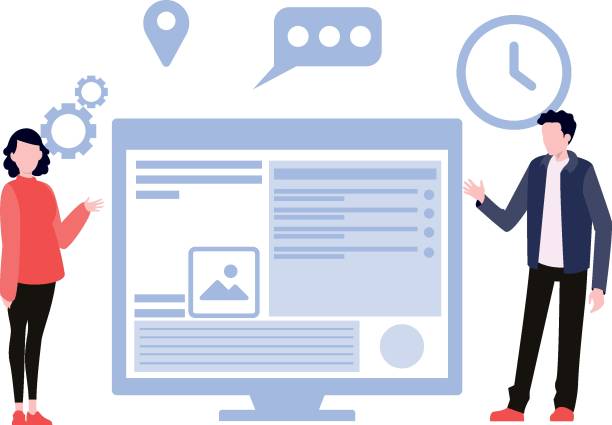
Building a website with multi-language support requires attention to many technical details.
Choosing a suitable Content Management System (CMS) that supports multilingual capabilities (such as WordPress with plugins like WPML or Polylang, or Drupal and Joomla which have built-in support), is the first crucial step.
Next comes URL structure, using hreflang tags for search engines, and managing the database for translated content.
Each of these can be challenging.
The most guiding and specialized approach is to use standard and optimized methods to prevent potential issues like duplicate content.
Below is a table of some popular CMSs and their approach to multilingualism:
| Content Management System (CMS) | Default/Plugin Multilingual Capability | Key Notes |
|---|---|---|
| WordPress | Plugin (WPML, Polylang) | Easy installation and configuration, high flexibility, potential costs for premium plugins |
| Drupal | Default (core modules) | Strong built-in capabilities, suitable for large projects, more complexity in initial setup |
| Joomla | Default | Good built-in support, active user community, slightly older user interface |
| Shopify | Plugin (Transcy, Langify) | Simple for online stores, supports various currencies, customization limitations compared to open-source CMSs |
Attention should also be paid to other technical points, such as choosing suitable hosting to support different domains or language subdirectories, and how to manage media files (images, videos) for each language.
All these aspects together provide a seamless experience for multilingual users and greatly contribute to the success of your multilingual website design project.
SEO Strategies for Multilingual Websites

SEO (Search Engine Optimization) for creating websites with multilingual capabilities goes beyond merely translating keywords.
You need a comprehensive strategy that includes local keyword research for each language, content optimization for region-specific search terms, and correct use of hreflang tags.
These tags help search engines like Google display the correct version of the page based on the user’s language and region.
The most specialized approach is to consider an appropriate URL structure (subdomains, subfolders, or country-specific top-level domains) and create separate sitemaps for each language.
Furthermore, internal linking between different language versions and acquiring high-quality backlinks from reputable sites in each region are highly important.
Paying attention to site loading speed and responsiveness is also very effective for user experience and SEO ranking for international audiences.
These educational and guiding approaches will be the key to your success in attracting global traffic.
How much does losing business leads due to an unprofessional website cost you? Solve this problem forever with professional corporate website design by Rasaweb!
✅ Increase credibility and trust among potential customers
✅ Easier acquisition of new business leads
⚡ Get a free consultation now!
Content and Translation in Multilingual Website Design Beyond Words

One of the biggest challenges in implementing international websites is content and translation management.
Is simply translating words enough? Absolutely not.
The content must be thought-provoking and relevant to the culture and language of the target audience.
This means that attention should be paid not only to accurate translation but also to localization.
Localization includes adapting content to customs, currencies, dates, address formats, and even colors associated with each culture.
Using professional translators who are native speakers and familiar with the target culture is crucial.
Machine translation tools can be a good starting point, but they can never replace the accuracy and subtlety of a human translator.
Furthermore, you should have a strategy for simultaneously updating content in all languages to prevent information inconsistencies.
This section, serving as guidance and specialized advice, emphasizes the importance of understanding cultural differences in content production.
User Experience (UX) in Multicultural Websites

User Experience (UX) plays a pivotal role in multilingual website design.
Good UX makes users feel comfortable and allows them to easily select their desired language.
This includes placing language selection options in accessible locations (such as the header or footer), using recognizable flags or language codes, and ensuring that all navigation and user interface elements are correctly translated.
Page loading speed in different parts of the world and compatibility with various devices (mobile, tablet, desktop) are also of high importance.
Another explanation is that the design should be visually appealing to different cultures; for instance, some cultures use Right-to-Left (RTL) layouts, which must be considered in the design.
An excellent user experience not only increases customer satisfaction but also significantly helps increase user retention time on the site and reduce bounce rate.
These aspects are particularly crucial in the user experience design of global websites.
The Importance of Cultural and Legal Adaptation in Multilingual Website Design
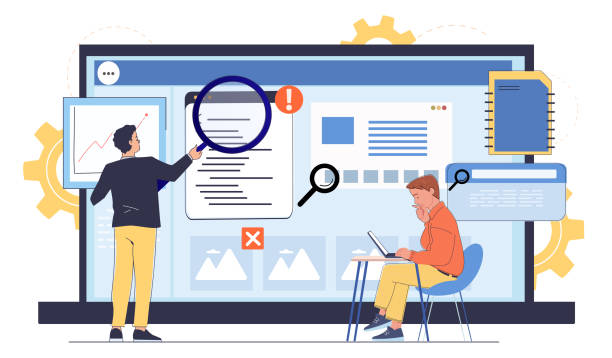
When creating multicultural portals, beyond language, attention must also be paid to the laws and cultural norms of each region.
This includes data privacy laws (such as GDPR in Europe or CCPA in California), e-commerce regulations, and even laws related to advertising and content.
Ignoring these can lead to legal problems and loss of customer trust.
From a cultural perspective, care must be taken with elements like colors, images, symbols, and even jokes or allusions that might have a positive meaning in one culture and a negative one in another.
A deep analysis of the target market is essential to identify these differences.
Here is a table of some cultural and legal aspects that should be considered:
| Aspect | Explanation | Example/Importance in Design |
|---|---|---|
| Data Privacy Laws | Regulations related to the collection, storage, and processing of users’ personal information. | GDPR in Europe, CCPA in California; displaying cookie notices and privacy policies in the local language. |
| Visual Content (Images, Colors) | Some colors or images may have different meanings in different cultures. | Red symbolizes good luck in China and danger in some Western cultures; using diverse and culturally appropriate images. |
| Currency and Date/Time Format | Correct display of financial and time information based on local standards. | Dollars, Euros, Pounds; date format (MM/DD/YYYY or DD/MM/YYYY); time zone. |
| User Interface (UI) and Layout | Arrangement of elements and text direction (right-to-left or left-to-right). | Languages like Persian and Arabic require RTL design; placement of logos and menus. |
Awareness of these differences and their application in multilingual website design not only prevents problems but also helps create a positive and reliable user experience for global audiences.
This is a specialized and essential section that should not be overlooked.
Success Stories and Practical Experiences with Multilingual Websites
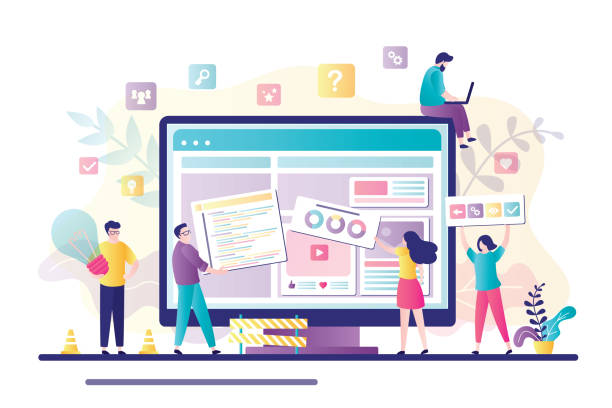
Perhaps you wonder if multilingual website design truly leads to success? The answer is a definitive yes.
Large companies like Airbnb and Netflix, by offering their services in dozens of different languages, have managed to penetrate global markets and attract millions of users.
Even smaller businesses have seen significant growth by creating websites with the ability to display in various languages.
As a news-worthy hypothetical example, an educational software startup in Iran, by adding English and Arabic languages to its website, managed to increase its registrations from neighboring countries and North America by 40% within one year.
These successes demonstrate that investing in multilingualism is a smart and profitable decision.
Sometimes these stories are so inspiring that they also become entertaining and open up new horizons for us.
These practical experiences are strong evidence of the real value of this approach.
Did you know that 94% of a first impression of a company is related to its website design?
Rasaweb, by offering professional corporate website design services, helps you create the best first impression.
✅ Creating a professional and trustworthy image for your brand
✅ Easier attraction of new potential customers and improvement of online standing
⚡ Get a free corporate website design consultation now!
The Future of Multilingual Website Design and New Trends
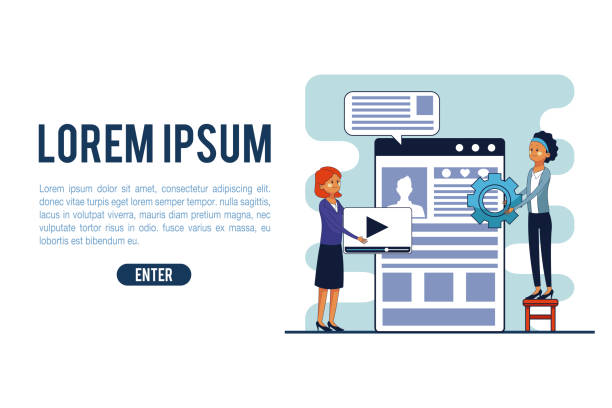
With advancements in technology and artificial intelligence, the future of multilingual website design will also undergo significant changes.
AI-powered machine translation tools with higher accuracy will make the translation process faster and cheaper.
Furthermore, content personalization based on the user’s geographical location and language will reach new levels.
Websites may automatically detect the language based on browser settings or the user’s IP and display localized content.
Virtual Reality (VR) and Augmented Reality (AR) can also play an important role in the future in delivering multilingual and multicultural content, providing a fully immersive user experience.
An analysis of these trends indicates that multilingual capability will evolve from a feature into an indispensable component of modern website design.
These developments can significantly enhance the experience for global users and open up new markets for businesses.
Conclusion and Final Recommendations for Entering the Global Market

Ultimately, multilingual website design is a strategic investment for any business aiming to compete on the global stage.
This process not only helps you reach a wider audience but also enhances your brand’s credibility and improves customer loyalty.
To succeed on this path, you need a comprehensive approach that includes technical, content, and cultural aspects.
From choosing the right CMS and a strong SEO strategy to precise content localization and attention to user experience, each step is of particular importance.
The guiding and educational nature of this journey requires careful planning and the use of expertise in each area.
By correctly implementing these principles, you can build a website that not only speaks in different languages but also connects with diverse cultures, thereby paving the way for sustainable success in the international market.
Frequently Asked Questions
| Question | Answer |
|---|---|
| What is a multilingual website? | A website whose content is available to users in more than one language. |
| Why should I make my site multilingual? | To access more audiences in global markets, improve user experience, and enhance international SEO. |
| What are the technical approaches to building a multilingual site? | Using subdirectories, subdomains, or URL parameters to separate languages. |
| How does multilingual design affect SEO? | By targeting local keywords and providing content in users’ native languages, the site’s ranking in search engines for those regions improves. |
| What are the challenges of multilingual website design? | Content translation management, support for Right-to-Left (RTL) direction, technical issues related to language addressing, and maintaining design consistency. |
| How do we choose the languages for a multilingual site? | Based on target audience analysis, desired markets, and current site traffic data (if available). |
| What is RTL support and why is it important for some languages? | Right-to-Left, the direction of text and page elements from right to left, which is essential for languages like Persian, Arabic, and Hebrew. |
| How do we manage multilingual website content? | Using multilingual-capable Content Management Systems (CMS), translation plugins, or professional translation services. |
| What is the user experience (UX) like on a multilingual site? | It should be easy to change the language, and the translated content should be of high quality so that users feel comfortable. |
| Which are the common CMS platforms for multilingual sites? | WordPress (with plugins like WPML), Joomla, Drupal, and Shopify (with relevant settings or plugins). |
And other services of Rasa Web Advertising Agency in the field of advertising
Smart Custom Software: A professional solution for customer acquisition with a focus on SEO-driven content strategy.
Smart Custom Software: A professional solution for customer behavior analysis with a focus on custom programming.
Smart Data Analysis: Transform click-through rates with custom programming.
Smart Brand Identity: An effective tool for customer behavior analysis through precise audience targeting.
Smart Marketing Automation: A combination of creativity and technology for digital branding through intelligent data analysis.
And over a hundred other services in the fields of internet advertising, advertising consultation, and organizational solutions
Internet Advertising | Advertising Strategy | Advertorials
Resources
Importance of Multilingual Website Design
Steps to Globalizing Your Business
Comprehensive Multilingual SEO Guide
The Digital Age and Business
? Are you looking for a digital transformation for your business? Rasaweb Afarin Digital Marketing Agency, by providing services such as professional website design, SEO, and social media management, smooths your path to growth. Trust us to make your online presence shine and elevate your business to the peak of success.
📍 Tehran, Mirdamad Street, next to Bank Markazi, Kazeroun Jonoubi Alley, Ramin Alley, No. 6

